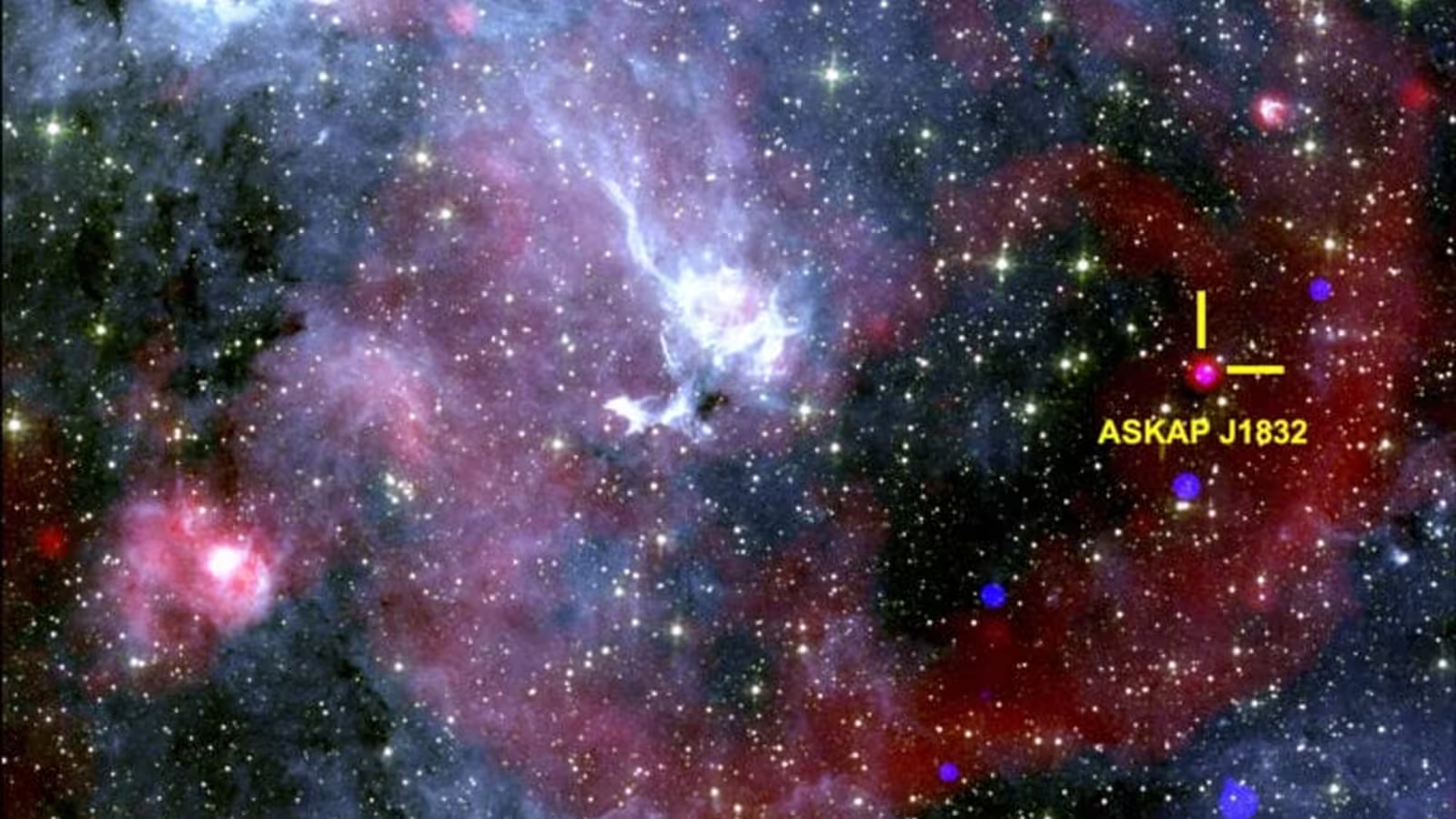4 Minutes
Breakthrough Discovery: Unusual Dual Signals Detected from Deep Space
A team of international astronomers has recently identified a celestial object unlike any seen before, delivering fresh insights into some of the universe’s most enigmatic phenomena. Designated ASKAP J1832-0911, this object was discovered by the International Centre for Radio Astronomy Research (ICRAR) in Australia using the cutting-edge ASKAP (Australian Square Kilometre Array Pathfinder) radio telescope. What sets ASKAP J1832-0911 apart is its rare emission of both radio waves and X-rays in a synchronized fashion, signaling a new chapter in our understanding of cosmic signals.
The Enigma of Long-Period Transients: Understanding a Rare Class of Space Objects
ASKAP J1832-0911 is believed to be part of a newly recognized class of astronomical phenomena known as long-period transients (LPTs). LPTs are characterized by their emission of powerful radio pulses at unusually lengthy, consistent intervals—often minutes or even hours apart—unlike the much shorter bursts seen from known pulsars or fast radio bursts (FRBs). Since the first reported LPT was identified by ICRAR in 2022, only around ten such objects have been confirmed, making them exceedingly rare and their origins a hot topic of astrophysical research.
Unexpected X-ray Emissions: A Surprising Dual Signal
The true surprise with ASKAP J1832-0911 came when NASA’s Chandra X-ray Observatory, by chance, was observing the very same region of the Milky Way at the same time as ASKAP. This cosmic coincidence led to the simultaneous detection of intense X-ray pulses alongside the object’s radio bursts—an occurrence never before seen in LPTs. According to Dr. Ziteng (Andy) Wang, lead author and astronomer at ICRAR–Curtin University, this was akin to "finding a needle in a haystack" due to Chandra’s relatively narrow viewing field compared to ASKAP’s wide sky coverage.
During observations, ASKAP J1832-0911 was found to emit concurrent radio and X-ray pulses for approximately two minutes, recurring every 44 minutes. This pattern is not only unique among known galactic objects, but it also challenges existing astrophysical models. As detailed in a study published in Nature, the detection of these dual signals suggests that ASKAP J1832-0911 exhibits properties previously unobserved in any other astronomical source.
Exploring the Nature of ASKAP J1832-0911: Magnetar or Something New?
Interpreting the origins of ASKAP J1832-0911’s unusual emissions has sparked both excitement and debate within the astronomical community. Dr. Wang and colleagues have proposed several possible explanations. One theory suggests the object might be a magnetar—a highly magnetized neutron star created by the collapse of a massive star. Magnetars are known to emit both radio and X-ray pulses, but the specific regularity and intensity observed in ASKAP J1832-0911 do not fully fit typical magnetar profiles.
Another leading hypothesis points to a binary star system, where a highly magnetized white dwarf—a dense stellar remnant—interacts closely with a companion star. In certain cases, this configuration can drive periodic emissions across a wide range of wavelengths, from radio to X-rays. However, the precise simultaneous behavior documented in ASKAP J1832-0911 remains unexplained by either of these models, suggesting the possibility of new physics or a need for significant refinement of current theories about stellar evolution and transient astronomical events.
Implications and the Road Ahead: Searching for More Unusual Cosmic Signals
The identification of ASKAP J1832-0911 is igniting a renewed search for additional long-period transients and similarly mysterious space objects. “Finding one such object hints at the existence of many more,” notes co-author Dr. Nanda Rea, an astrophysicist with the Institute of Space Science (ICE-CSIC) and the Institute of Space Studies of Catalonia (IEEC), Spain. She emphasizes that the detection of transient X-ray emissions provides new perspectives on the nature and origins of LPTs, potentially opening doors to uncharted areas of astrophysics.
As technological advancements in radio and X-ray astronomy continue, researchers are optimistic about uncovering more examples of these rare cosmic phenomena. Each discovery not only enriches our knowledge of the Milky Way but could also hold the key to unraveling longstanding mysteries about the high-energy universe and the lifecycle of stars.
Conclusion
The discovery of ASKAP J1832-0911 marks a significant leap forward in astrophysics, revealing a unique source that challenges our understanding of long-period transients and the mechanisms behind cosmic signal generation. While existing theories—ranging from magnetars to exotic binary systems—offer partial explanations, none fully capture the complexities of this object’s dual emissions. This breakthrough underscores the need for continued observational campaigns and theoretical exploration, highlighting the dynamic and ever-evolving nature of space science. The work not only expands the frontier of human knowledge but also serves as a reminder of the cosmos’ capacity to surprise—even after decades of diligent skywatching.


Comments